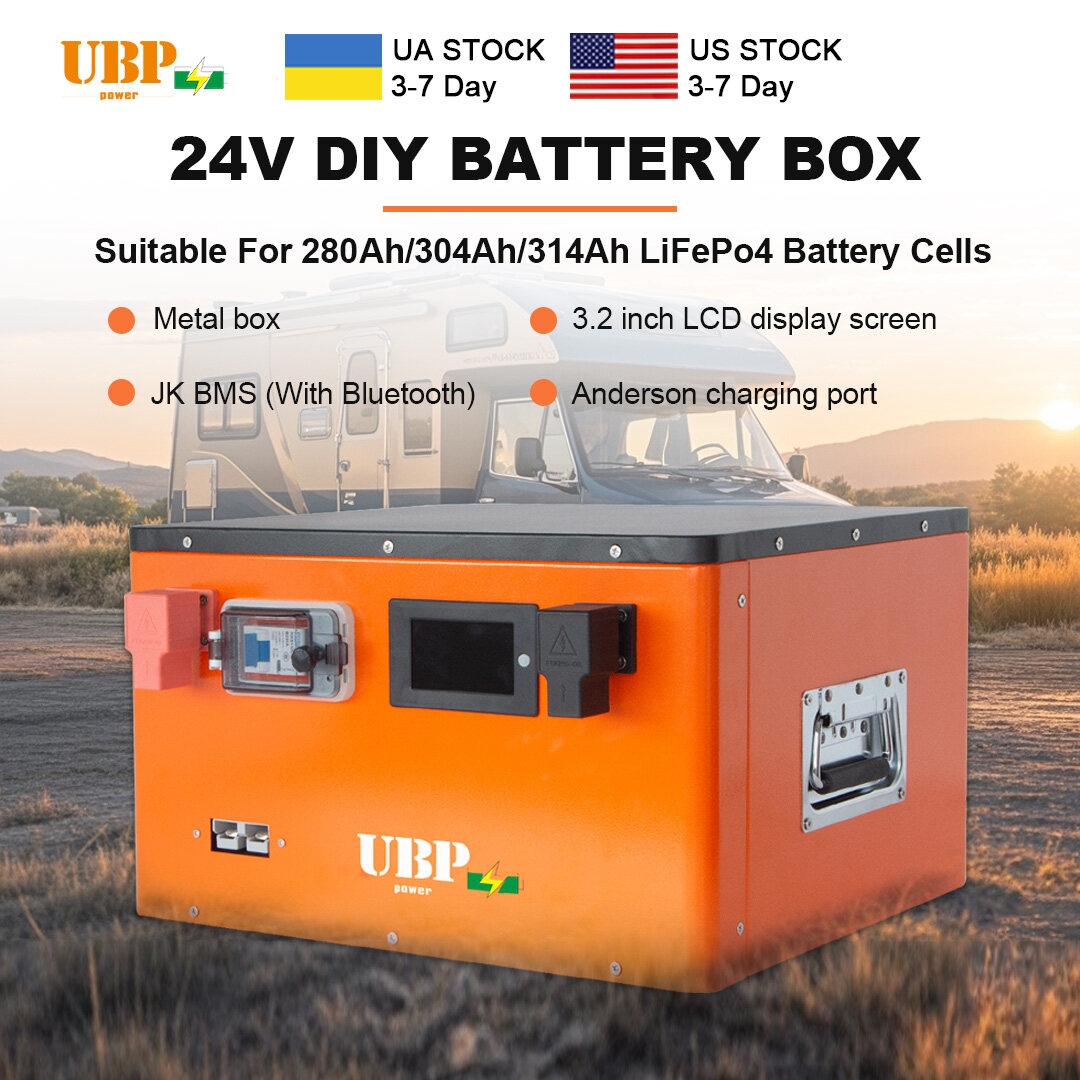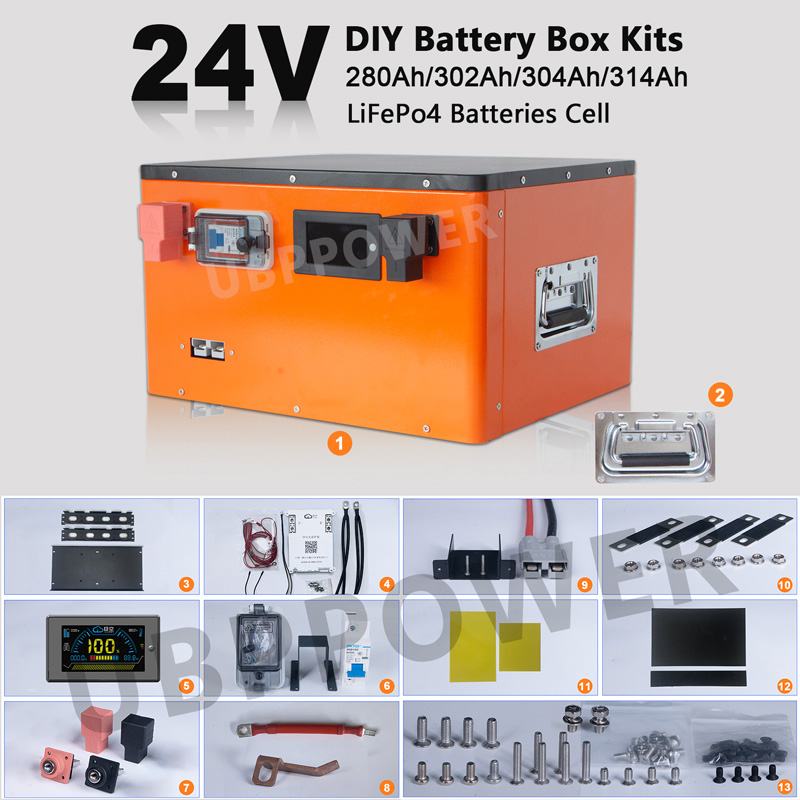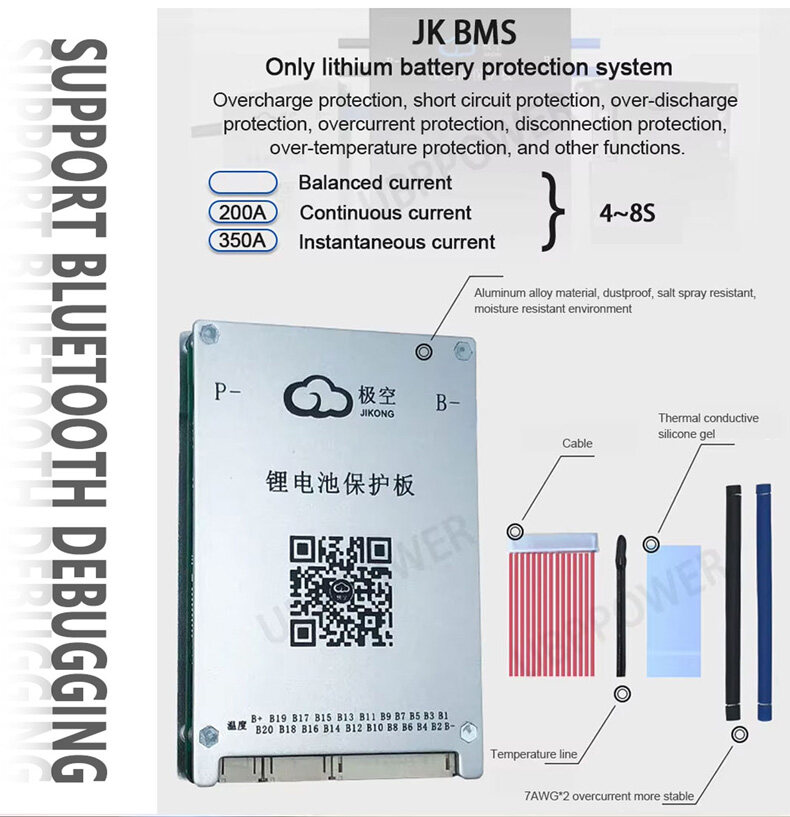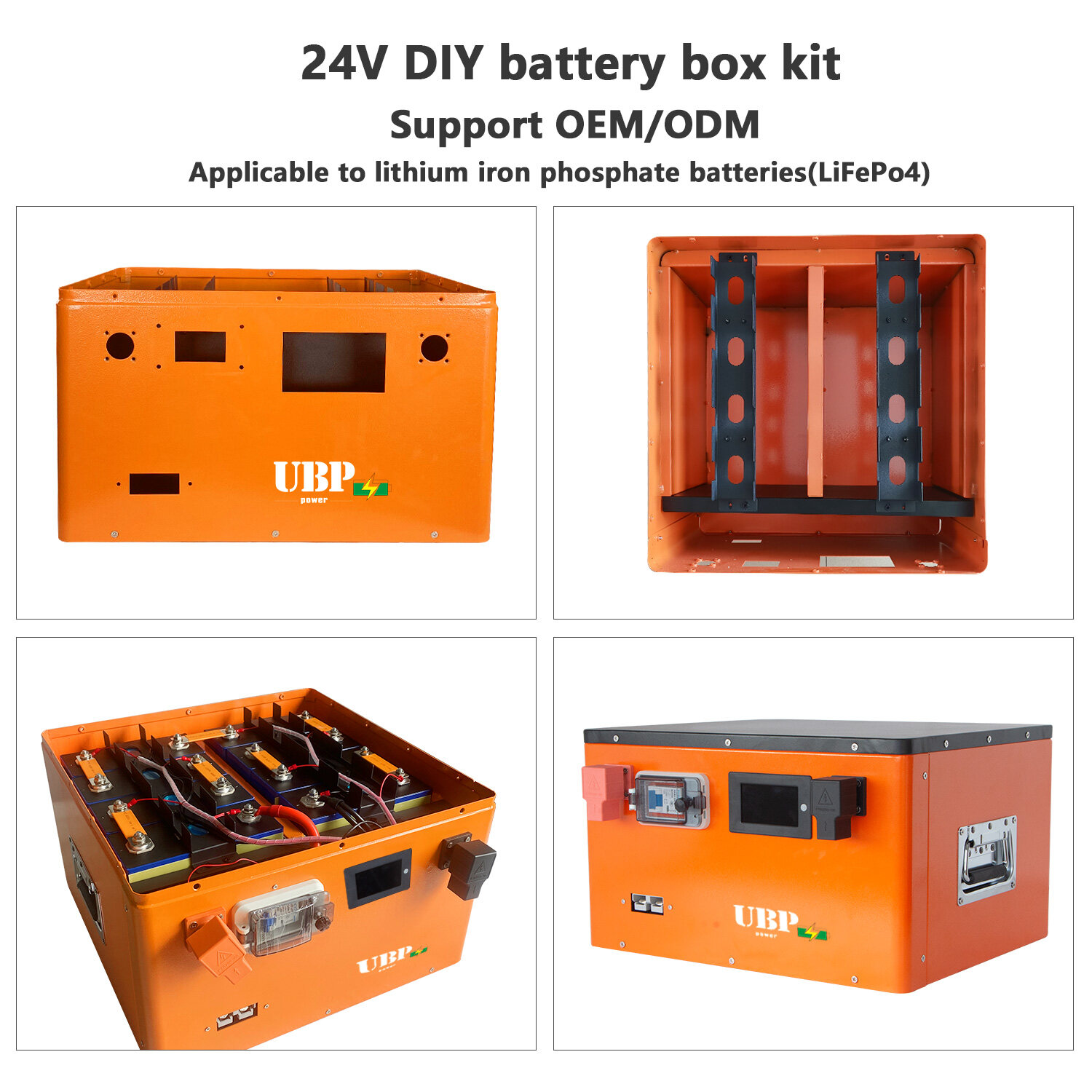Email format error
Email cannot be empty
Email already exists
6-20 characters(letters plus numbers only)
The password is inconsistent
Please enter the email address you’d like your password reset information sent to.
Email format error
Email cannot be empty
Email does not exist
Reset account password
For the account
6-20 characters(letters plus numbers only)
The password is inconsistent
Reset success
Your password was reset. You can log in using your new password.
Login

Newsweek
Grasp current events and learn more about batteries

24V DIY battery pack: Create new energy with your own hands.
2024-09-23 17:43:31
24V DIY battery pack: Create new energy with your own hands.
1. The allure and demand of a 24V DIY battery pack

The 24V DIY battery pack has many charms. First of all, it performs well in meeting the power supply needs of specific equipment. For example, for devices with moderate power requirements, such as a 24V 320W DC submersible pump, the 24V DIY battery pack can provide stable power support. Calculating backwards according to the formula "voltage × capacity ÷ power = usage time", a 24V lithium battery pack assembled from old battery cells has a capacity of approximately 14 ampere-hours, which can fully power the submersible pump for over an hour, meeting the usage needs in specific scenarios.
In terms of portable power sources, the advantages of the 24V DIY battery pack are obvious. Compared to traditional lead-acid batteries, the 24V DIY battery pack with lithium iron phosphate is lighter in weight. For example, a Tianeng lead-acid battery of the same specifications made by the author's parents weighs 24 pounds, while the DIY 24V lithium battery pack weighs approximately 4.8 kilograms, making it easier to carry. This is crucial for scenarios where power needs to be used outdoors, such as camping, outdoor work, etc.
Furthermore, there is a wide interest in the 24V DIY battery pack among people. From online discussions, it can be seen that DIY posts about batteries have a large proportion recently, with many people sharing their production experiences and insights. Whether it is to satisfy personal interests or practical usage needs, the 24V DIY battery pack has attracted the attention and attempts of many enthusiasts.
• Batteries: You can choose lithium iron phosphate batteries, such as the common EVE 280AH lithium iron phosphate battery. Determine the quantity and capacity of the batteries according to your needs, generally increasing capacity by parallel connection and increasing voltage by series connection.
• Battery charger: You will need to choose a charger that matches the batteries used, such as a 24V lithium iron phosphate dedicated charger, with an actual charging voltage of generally 29.2V.
• Battery Management System (BMS): Ensure that the batteries are protected from overcharging and overdischarging. For lithium iron phosphate batteries, choose the corresponding BMS, such as an 8S 24V280Ah BMS.
• Wiring and connectors: Use appropriate wire sizes, with red or red wires connected to the positive pole (+) and black or black wires connected to the negative pole (-). You can prepare battery connectors or suitable battery wires to ensure secure connections without corrosion.
• Interfaces: Anderson charging interface, capable of withstanding high voltage.
(2) Specific assembly steps
First, determine the connection method of the battery. For a 24V battery pack, it can be connected in series. For example, with two 12V batteries, connect the negative terminal of the first battery to the positive terminal of the second battery, creating a 24V battery pack. When connecting the batteries, make sure the positive and negative terminals are correctly connected to avoid damaging the batteries.
During the connection process, use the correct wire gauge, ensure tight and corrosion-free connections. Tools such as soldering iron, wire strippers can be used for the connection operation. After the connection is completed, solder the Battery Management System (BMS) to the battery to protect it.

Next, connect the battery holder to the BMS for easy connection and disconnection of the battery pack with the solar system or other devices.
Finally, use a multimeter to test the battery pack, check if the voltage is normal, and ensure the battery pack can function properly. Throughout the assembly process, carefully inspect each connection point to ensure safety and reliability.
Firstly, inconsistent capacity can result in imbalance in charging and discharging of the battery pack. For example, during the charging process, cells with higher capacity will continue to receive charge after being fully charged, while cells with lower capacity are still receiving charge even though they are already full, causing some cells to be overcharged while others are not fully charged. This will reduce the efficiency of the battery pack charging, damage the battery pack, and increase the risk of accidents. Similarly, there are imbalance issues during the discharging process, leading to different end times for discharging the battery pack, affecting the overall device's power management.
Secondly, inconsistent voltage can affect the stability of charging and discharging of the battery pack. During the charging process, cells with lower voltage will be fully charged first, but cells with higher voltage are still charging, resulting in unstable voltage of the battery pack. During the discharging process, cells with lower voltage cannot supply the required power, causing the load to deplete the entire battery pack's energy, resulting in insufficient power to support the device's operation. Cells with higher voltage continuously supply power, leading to reduced capacity and lifespan, ultimately shortening the lifespan of the entire battery pack.
Lastly, inconsistent internal resistance will affect the heating and cycle life of the battery pack. Due to different internal resistances of different cells, the current in the battery pack will flow through the cell with the lowest internal resistance. When the current flows through the cell with the highest internal resistance, the cell may overheat or cause the battery pack to fail prematurely. Cells with higher internal resistance are more prone to overheating during fast charging or supercharging processes, shortening the lifespan of the battery pack.
(2) Safety precautions
During the assembly and use of a 24V DIY battery pack, a series of safety precautions must be taken.
In terms of grounding, the negative pole can be directly connected to the ground wire, but the negative pole is not equivalent to the ground. 24V power supplies are generally used for analog power supplies, so analog grounding is more common. For communication networks such as Profibus and Profinet, equipotential between communication devices is required, and the potential should be relative to the ground. For example, inside Siemens' s120 servo drive unit, the motor module has connected M and PE.
In terms of preventing electric shock, when assembling the battery, assembly personnel must wear gloves and goggles, and each assembler must have safety items such as earplugs and face masks. When removing batteries and components, insulated gloves must be worn on the hands. Devices such as electric door locks and fuses that are prone to forming electric sparks must be isolated from the battery.
Choosing the right charger is also crucial. If it is a lithium battery, it is best to use the original charger, generally a charger with one-tenth of the current can be used for charging. For a 24V battery pack, a charger with a voltage of 24.5 volts to 27 volts is generally selected. At the same time, ensure that the charger has overvoltage protection, overcurrent protection, overheat protection, and other safety measures to avoid damage to the charger and battery, while ensuring safety during use.
4. Show your charm in practical applications

1. Powering Submersible Pumps
The 24V DIY battery pack performs excellently in powering submersible pumps. For example, when connected to a 24V 320W DC submersible pump tested by the author, the water pressure was normal, and it could run for over an hour on a full charge. This is very practical for scenarios where outdoor watering operations are needed, such as in vegetable gardens or flower gardens. Using a 24V DIY battery pack to power submersible pumps allows for convenient irrigation without being limited by a fixed power source.
According to the materials found, there are various submersible pump products available on the market that are suitable for 24V batteries. For example, the Hualang foreign trade DC submersible pump for watering vegetables and flowers, which can be used with a 12V24V self-matching battery, micro water pump, or solar pump.
2. As a Portable Power Source
The 24V DIY battery pack can also be used as a portable power source to provide power support for various devices. In scenarios like camping or outdoor work, a portable power source is essential. Compared to traditional portable power sources, the 24V DIY battery pack has a higher capacity and more stable output voltage, meeting the power supply needs of more devices.
For example, in scenarios where high-power devices are needed, such as outdoor speakers or projectors, the 24V DIY battery pack can provide stable power support. Additionally, due to its lightweight and easy portability, users can easily bring it to any desired location.
Furthermore, the 24V DIY battery pack can be combined with a solar charging system to build a solar energy storage system, providing clean energy support for mobile devices. In remote areas or places without a fixed power source, this solar energy storage system can provide users with a reliable power source.
In conclusion, the 24V DIY battery pack has a wide range of applications in powering submersible pumps, serving as a portable power source, and more, bringing practicality and convenience to users.
More:
WWW.UBPPOWER.COM
1. The allure and demand of a 24V DIY battery pack

The 24V DIY battery pack has many charms. First of all, it performs well in meeting the power supply needs of specific equipment. For example, for devices with moderate power requirements, such as a 24V 320W DC submersible pump, the 24V DIY battery pack can provide stable power support. Calculating backwards according to the formula "voltage × capacity ÷ power = usage time", a 24V lithium battery pack assembled from old battery cells has a capacity of approximately 14 ampere-hours, which can fully power the submersible pump for over an hour, meeting the usage needs in specific scenarios.
In terms of portable power sources, the advantages of the 24V DIY battery pack are obvious. Compared to traditional lead-acid batteries, the 24V DIY battery pack with lithium iron phosphate is lighter in weight. For example, a Tianeng lead-acid battery of the same specifications made by the author's parents weighs 24 pounds, while the DIY 24V lithium battery pack weighs approximately 4.8 kilograms, making it easier to carry. This is crucial for scenarios where power needs to be used outdoors, such as camping, outdoor work, etc.
Furthermore, there is a wide interest in the 24V DIY battery pack among people. From online discussions, it can be seen that DIY posts about batteries have a large proportion recently, with many people sharing their production experiences and insights. Whether it is to satisfy personal interests or practical usage needs, the 24V DIY battery pack has attracted the attention and attempts of many enthusiasts.
2. Assembly method fully explained
(1) Basic materials preparation
To assemble a 24V DIY battery pack, you will need the following materials:• Batteries: You can choose lithium iron phosphate batteries, such as the common EVE 280AH lithium iron phosphate battery. Determine the quantity and capacity of the batteries according to your needs, generally increasing capacity by parallel connection and increasing voltage by series connection.
• Battery charger: You will need to choose a charger that matches the batteries used, such as a 24V lithium iron phosphate dedicated charger, with an actual charging voltage of generally 29.2V.
• Battery Management System (BMS): Ensure that the batteries are protected from overcharging and overdischarging. For lithium iron phosphate batteries, choose the corresponding BMS, such as an 8S 24V280Ah BMS.
• Wiring and connectors: Use appropriate wire sizes, with red or red wires connected to the positive pole (+) and black or black wires connected to the negative pole (-). You can prepare battery connectors or suitable battery wires to ensure secure connections without corrosion.
• Interfaces: Anderson charging interface, capable of withstanding high voltage.
(2) Specific assembly steps
First, determine the connection method of the battery. For a 24V battery pack, it can be connected in series. For example, with two 12V batteries, connect the negative terminal of the first battery to the positive terminal of the second battery, creating a 24V battery pack. When connecting the batteries, make sure the positive and negative terminals are correctly connected to avoid damaging the batteries.
During the connection process, use the correct wire gauge, ensure tight and corrosion-free connections. Tools such as soldering iron, wire strippers can be used for the connection operation. After the connection is completed, solder the Battery Management System (BMS) to the battery to protect it.

Next, connect the battery holder to the BMS for easy connection and disconnection of the battery pack with the solar system or other devices.
Finally, use a multimeter to test the battery pack, check if the voltage is normal, and ensure the battery pack can function properly. Throughout the assembly process, carefully inspect each connection point to ensure safety and reliability.
3. Important points to remember
(1) Battery consistency issue
The consistency of battery capacity, voltage, internal resistance, etc. is crucial. If the individual cells in the battery pack are not consistent in these aspects, it may lead to various adverse effects.Firstly, inconsistent capacity can result in imbalance in charging and discharging of the battery pack. For example, during the charging process, cells with higher capacity will continue to receive charge after being fully charged, while cells with lower capacity are still receiving charge even though they are already full, causing some cells to be overcharged while others are not fully charged. This will reduce the efficiency of the battery pack charging, damage the battery pack, and increase the risk of accidents. Similarly, there are imbalance issues during the discharging process, leading to different end times for discharging the battery pack, affecting the overall device's power management.
Secondly, inconsistent voltage can affect the stability of charging and discharging of the battery pack. During the charging process, cells with lower voltage will be fully charged first, but cells with higher voltage are still charging, resulting in unstable voltage of the battery pack. During the discharging process, cells with lower voltage cannot supply the required power, causing the load to deplete the entire battery pack's energy, resulting in insufficient power to support the device's operation. Cells with higher voltage continuously supply power, leading to reduced capacity and lifespan, ultimately shortening the lifespan of the entire battery pack.
Lastly, inconsistent internal resistance will affect the heating and cycle life of the battery pack. Due to different internal resistances of different cells, the current in the battery pack will flow through the cell with the lowest internal resistance. When the current flows through the cell with the highest internal resistance, the cell may overheat or cause the battery pack to fail prematurely. Cells with higher internal resistance are more prone to overheating during fast charging or supercharging processes, shortening the lifespan of the battery pack.
(2) Safety precautions
During the assembly and use of a 24V DIY battery pack, a series of safety precautions must be taken.
In terms of grounding, the negative pole can be directly connected to the ground wire, but the negative pole is not equivalent to the ground. 24V power supplies are generally used for analog power supplies, so analog grounding is more common. For communication networks such as Profibus and Profinet, equipotential between communication devices is required, and the potential should be relative to the ground. For example, inside Siemens' s120 servo drive unit, the motor module has connected M and PE.
In terms of preventing electric shock, when assembling the battery, assembly personnel must wear gloves and goggles, and each assembler must have safety items such as earplugs and face masks. When removing batteries and components, insulated gloves must be worn on the hands. Devices such as electric door locks and fuses that are prone to forming electric sparks must be isolated from the battery.
Choosing the right charger is also crucial. If it is a lithium battery, it is best to use the original charger, generally a charger with one-tenth of the current can be used for charging. For a 24V battery pack, a charger with a voltage of 24.5 volts to 27 volts is generally selected. At the same time, ensure that the charger has overvoltage protection, overcurrent protection, overheat protection, and other safety measures to avoid damage to the charger and battery, while ensuring safety during use.
4. Show your charm in practical applications

1. Powering Submersible Pumps
The 24V DIY battery pack performs excellently in powering submersible pumps. For example, when connected to a 24V 320W DC submersible pump tested by the author, the water pressure was normal, and it could run for over an hour on a full charge. This is very practical for scenarios where outdoor watering operations are needed, such as in vegetable gardens or flower gardens. Using a 24V DIY battery pack to power submersible pumps allows for convenient irrigation without being limited by a fixed power source.
According to the materials found, there are various submersible pump products available on the market that are suitable for 24V batteries. For example, the Hualang foreign trade DC submersible pump for watering vegetables and flowers, which can be used with a 12V24V self-matching battery, micro water pump, or solar pump.
2. As a Portable Power Source
The 24V DIY battery pack can also be used as a portable power source to provide power support for various devices. In scenarios like camping or outdoor work, a portable power source is essential. Compared to traditional portable power sources, the 24V DIY battery pack has a higher capacity and more stable output voltage, meeting the power supply needs of more devices.
For example, in scenarios where high-power devices are needed, such as outdoor speakers or projectors, the 24V DIY battery pack can provide stable power support. Additionally, due to its lightweight and easy portability, users can easily bring it to any desired location.
Furthermore, the 24V DIY battery pack can be combined with a solar charging system to build a solar energy storage system, providing clean energy support for mobile devices. In remote areas or places without a fixed power source, this solar energy storage system can provide users with a reliable power source.
In conclusion, the 24V DIY battery pack has a wide range of applications in powering submersible pumps, serving as a portable power source, and more, bringing practicality and convenience to users.
More:
WWW.UBPPOWER.COM
Contact us
PRODUCT TAGS

